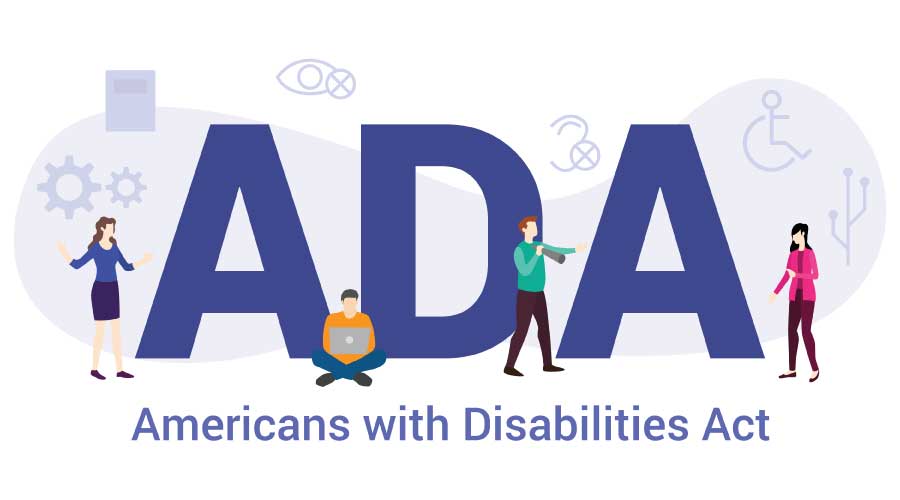Inside ADA
A closer look at 4 key access issues managers must understand
Jan. 26, 2005, marks the 13th anniversary of the enactment of the Americans with Disabilities Act (ADA). Although it has been law since the last century, considerable confusion, disagreement and consternation remains about its requirements and the need to comply.
All of this energy and cost could well have been spent by ensuring that existing facilities remove barriers, that all alterations and renovations are done correctly, and that all new construction projects are done in strict adherence to regulations. Where does that leave the maintenance manager who must respond to the multiple demands of owners, users and regulations, all at the same time?
Managers face a daily barrage of challenges and obstacles to the safe, efficient and user-friendly operation of their property. These challenges come in a variety of shapes and sizes and from a wide variety of both natural and human sources. Many managers can identify with some of the challenges that follow, and they might gain useful insight and guidance from the solutions offered.
Challenge #1
You have a multi-facility campus complex with a parking lot adjacent to each building or entrance. You’ve just completed a resurfacing contract with an asphalt contractor who told you “Don’t worry. I know all about the ADA requirements.” But you’ve discovered that they’ve completed their work and submitted the final invoice for payment. But the final inspection before payment reveals that they have not painted any compliant-reserved accessible parking spaces or access aisles. They also have ruined half of the previously compliant curb cuts.
Creative solution. First, withhold final payment, and double-check the contract. If the contract states that work was to be performed in compliance with applicable local, state or federal requirements, or if you have a warranty agreement with the contractor, exercise your rights under those agreements to force the contractor to correct its errors before making final payment.
The issue of the realigning and painting the spaces and access aisles should be a simple enough correction. But be sure that the proper signage is mounted in front of each of the parking spaces. The universal accessibility symbol painted on the ground is not sufficient.
When the contractor corrects the curb ramps, make sure to meet all of the requirements, including that the slope does not exceed a 1:12 ratio and that the transition from the parking lot and at the sidewalk are both smooth. You can find technical requirements in the Americans with Disabilities Act accessibility guidelines (ADAAG) at the Access Board’s web site.
Use the above-noted example as standard operating procedure — whether it is with architects, contractors or purchasing products that state that they are ADA approved — before signing the contract or purchase order.
Challenge #2
Your buildings get a tremendous amount of foot traffic every day. You have multiple entrances and multiple banks of elevators, and as a mixed-use facility, security staff must be alert to everything from questions from visitors, carpet runners dragged across the lobby, and a complaint from an older gentleman “of a young lady who came into the men’s room with her father.”
Just when things seem to be calming down, the fire alarm goes off, and the elevators shut down just as the annual luncheon of the “golden givers” in the ballroom on the third floor is ending.
Creative solution. Don’t panic. Dispatch both male and female facility and security personnel to the third-floor ballroom and its adjacent men’s and ladies’ rooms. If the restrooms and common areas do not have visual strobe alarms — an ADA requirement — people who cannot hear will not know the fire alarm has been sounded and that they need to evacuate. If the facility has developed an emergency evacuation plan that includes ways to evacuate people who cannot use stairs, put that plan into action. If you have not yet developed a plan, start with these first important steps:
-
Communicate to tenants about emergency evacuation procedures and routes. Hold evacuation drills, and do not make them voluntary.
-
Make sure security staff understands emergency procedures and routes.
-
If the building has guests sign in, add a simple question such as, “In case of an emergency, would you need assistance in getting out of the building?”
-
Consider buying emergency evacuation equipment if you have tenants who cannot use stairs. Someone with a hidden medical condition, such as a heart condition, or someone who was recently injured or recovering from surgery might need assistance.
As for the other issues in this scenario, make sure that carpet runners are securely attached to the floor. They present a trip hazard and a risk manager’s nightmare.
A good signage program would help the facility. It assists the security staff by providing wayfinding signage to the entrances and it directs the father with the young daughter to the family toilet room down the hall from the men’s room.
Challenge #3
You’re responsible for a medical facility and are preparing for a national accreditation review and a state inspection, bidding out the design work for a new children’s outpatient wing, as well as for renovations to the patient bathrooms in the hospital’s oldest wing.
Creative solution. Prioritize and document. First, the requirements for accreditation or state licensing in medical facilities often conflict with ADA requirements, requiring something that is prohibited under the ADA. This is particularly true for bathrooms in patient rooms.
In those instances, it is critical to get documentation from the accreditation or funding source to demonstrate why those particular elements do not meet the ADA requirements. But if the requirement calls for side-mounted grab bars on the toilet, consider wall-mounted, swing-away grab bars, which serve both purposes.
As for the children’s outpatient wing, the Access Board has developed guidance on children’s environment specifications that provide for lower toilet and lavatory mounting heights and other elements. They can be found at access-board web site
Finally, when renovating tiny patient room bathrooms, consider either removing or moving the lavatory to provide more floor space alongside the toilet. This allows for greater room for assisted transfers — particularly true in hospital settings — for patients who need it during their stay.
Challenge #4
The dean of admissions announces that the university has just been chosen to participate in a program for war-injured veterans to earn their degrees, but the university must assure that the campus is “ADA compliant.” What do you do, and where do you start?
Creative solution. If you did a self-evaluation and transition plan when the ADA was implemented in 1992, and if you have been implementing the plan for the past 12 years, you are in a very good position to be able to report quickly back to the dean about changes that might need to be made to the campus facilities, their costs, and when they would be complete.
Did the self-evaluation and transition plan include the residential-life aspects of campus, social and recreational and the exterior elements of the campus? How do students get between buildings? Where are the accessible walking routes, including curb cuts?
Take whatever information you do have and make sure it is current. An old evaluation of a building is useless, particularly where changes have been made. If no information is available, start reviewing your buildings.
Just as importantly, look at how someone — a student, visitor, alumni, family member, employee or faculty member — can get around the campus. Integrate that information into the campus map, on the web site and on any information available. Most people will find it helpful and useful.
Access for All
Remember one thing: All of these scenarios have one thing in common: Although they initially focused on ADA compliance, the solution actually created a safer and a more cost-effective environment for everyone visiting facilities.
There is a common denominator for all managers: Providing a safe and user-friendly environment for employees, visitors, customers, tenants, students and patients, whether they have disabilities or not, is the right thing to do. It is the smart thing to do, and it’s the law.
Joan W. Stein is the president and CEO of Accessibility Development Associates Inc. a Pittsburgh, Pa.-based consulting firm that provides a range of ADA consulting services throughout North America.
Related Topics:









